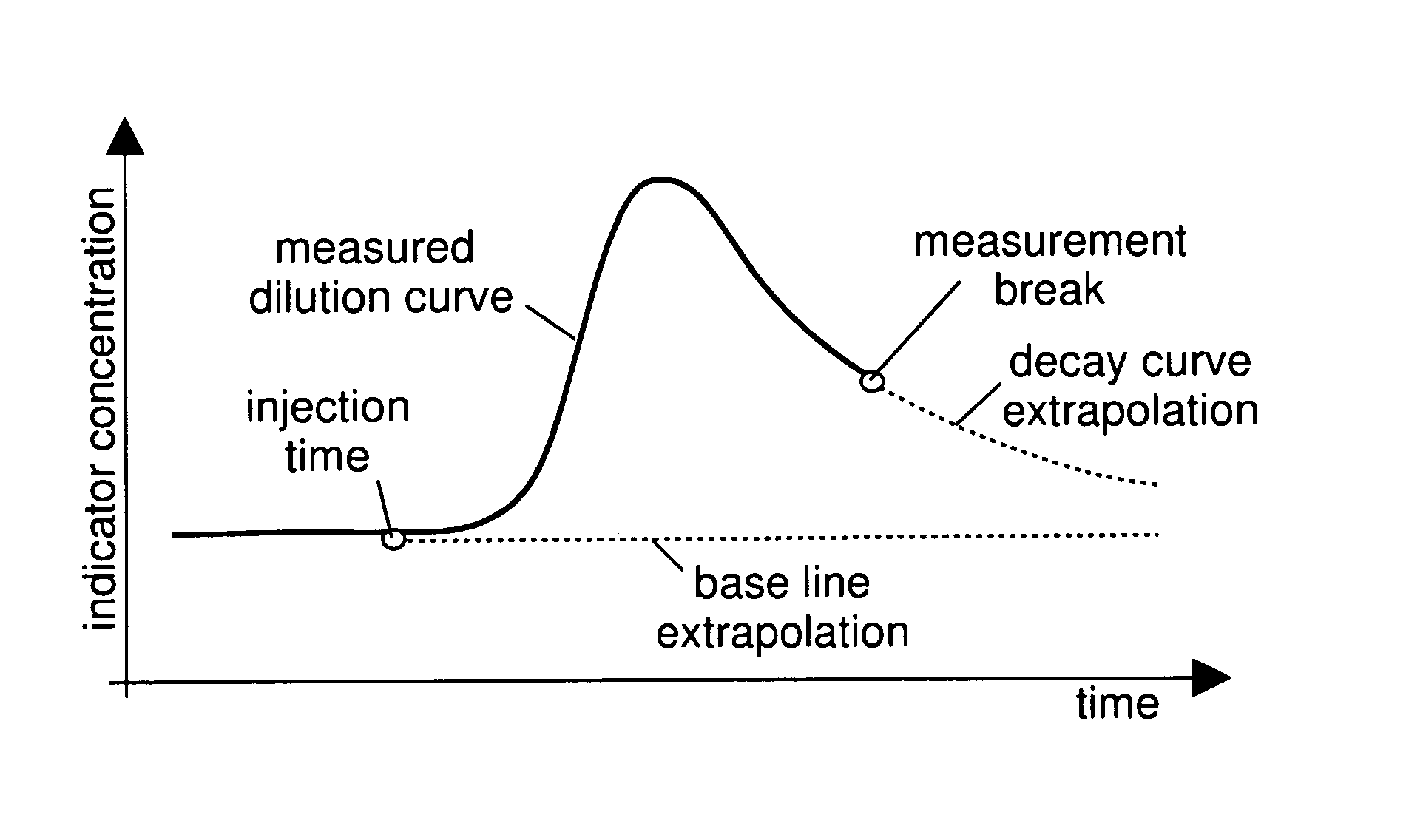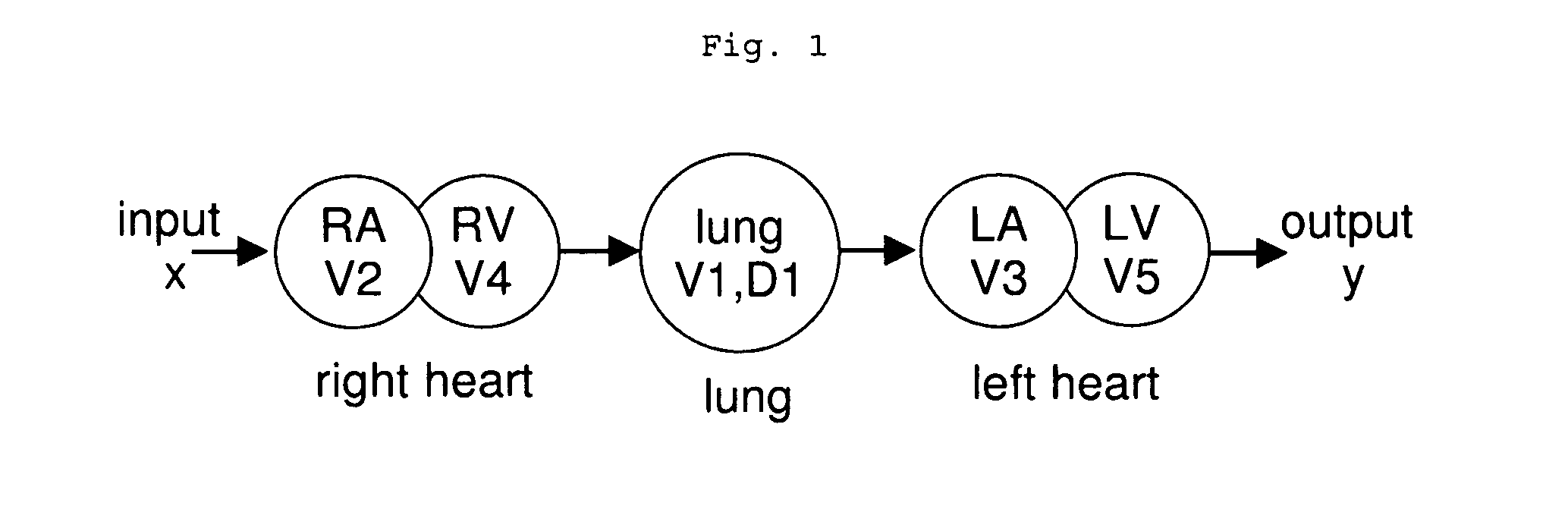Dilution apparatus, method and computer program
a technology of dilution apparatus and computer program, which is applied in the field of dilution apparatus, method and computer program, can solve the problems of reducing the accuracy of the global end-diastolic volume gedv calculated from these values, affecting the accuracy of the mean transit time mtt, and erroneous extrapolation
- Summary
- Abstract
- Description
- Claims
- Application Information
AI Technical Summary
Benefits of technology
Problems solved by technology
Method used
Image
Examples
Embodiment Construction
[0046]FIG. 2 shows the plot of a dilution curve, i.e. a graph of measured data of an indicator concentration versus time, wherein the indicator concentration axis is the ordinate and the time axis is the abscissa. Both axes are of linear scale.
[0047] Following the time axis and starting from the abscissa, at first the dilution curve forms the base line being substantially parallel to the time axis.
[0048] After having carried out an injection of the indicator into a patient's vena, the dilution curve starts to rise until a maximum value has been reached. After having passed this maximum value the dilution curve drops.
[0049] Until then the dilution curve is generated by using measured indicator concentration values.
[0050] When the dilution curve has reached the level of 40% of the difference between the maximum point and the base line (measurement break in FIG. 2), the dilution curve is no longer generated by measured indicator data but by an extrapolated decay curve.
[0051] The e...
PUM
 Login to View More
Login to View More Abstract
Description
Claims
Application Information
 Login to View More
Login to View More - R&D
- Intellectual Property
- Life Sciences
- Materials
- Tech Scout
- Unparalleled Data Quality
- Higher Quality Content
- 60% Fewer Hallucinations
Browse by: Latest US Patents, China's latest patents, Technical Efficacy Thesaurus, Application Domain, Technology Topic, Popular Technical Reports.
© 2025 PatSnap. All rights reserved.Legal|Privacy policy|Modern Slavery Act Transparency Statement|Sitemap|About US| Contact US: help@patsnap.com



